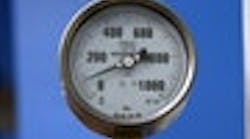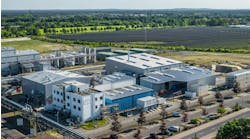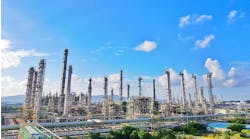Air compressors are the most commonly used process utility — and the most unnoticed energy consumer. That is, until a user starts complaining about the quality of the supplied compressed air. Because much process control hardware is pneumatic-based, the compressed air system is critical to operational efficiency. In addition, nearly 10% of all electrical energy used in a process facility is to run the air compressors. Hence, consider taking a look at your compressed air systems with the objective to optimize it. The following five simple steps could help you optimize the energy spent on compressors.
[sidebar id=1]
1.) Conduct a leak test. If your plant has non-continuous process operations, observe the compressor's loading and unloading times when there is no process activity. At one site test, I found that two of the five compressors with 100-hp motor drives didn't unload at all during a shutdown day. The third compressor was only able to unload for about 50% of its running time. In the following walk-through, we identified and tagged about 40 leaks from the hissing noise.
[pullquote]
2.) Critically review air pressure requirements. Typical compressed air system pressure is around 100 psig. You may be surprised to learn that the highest air pressure most users require is less than 60 psig. It is possible to reduce the air system pressure to decent levels. Reducing the delivery pressure of a single-stage reciprocating compressor from 100 to 80 psig cuts its power consumption by 9.5%. In addition, this decreases the amount of air leaks, as well as the maintenance cost of the compressor.
3.) Evaluate the air system's components. Check the receiver's size and location, the sizing of distribution piping and the type of air dryer installed. Simple changes like adding receivers at suitable locations and changing the pipe's sizing may help lower the air system pressure. Further, critically review each type of air dryer used — each suffers a certain percentage of air loss — to see if you can justify replacing any. These simple changes can help address chronic user complaints as well.
4.) Assess the compressor's cooling system. If your plant is located in a tropical region and you have some excess cooling-tower capacity, it may be possible to switch air-cooled compressors to water cooling. Another option, if applicable, is to recover the heat of compression for preheating make-up water to boilers.
For example, at a medium-sized chemical plant in Tennessee, chronic mechanical problems plagued its roof-top cooling tower dedicated to a large air compressor. The site was adding a large amount of make-up water from its softener to the boilers for steam generation. The ground well water sent to the water softener was lower in temperature than the temperature maintained by the cooling tower, and matched the quantity required to cool the air compressor. Thus, plant engineers welcomed the recommendation to use the softened water instead of the cooling tower. By the time I visited the site one year later, the plant engineers had forgotten about the existence of a cooling tower for the air compressor. They were happy to report savings both in electricity and maintenance costs.
5.) Consider cold air intake to the air compressors. As a rule of thumb, for every 7.2°F rise in air intake temperature, expect the motor drive's energy consumption to increase by 1%. For example, at one medium-sized chemical plant with many batch reactors, the outside air temperature measured lower by 5°F–12°F during a 24-hr period. We suggested providing a sheet metal duct through a side window to each of the three compressors inside the building.
These steps aren't the only opportunities to reduce the cost of running air compressors. Other options worth mentioning include microprocessor based controls that adjust loading and unloading times, predictive switching and rotational sequencing features. Also, don't ignore simple items such as perished hoses, cracked drain cocks and leaking air tools. However, these five simple steps could provide a good start towards optimization, because some plant operators don't realize air isn't free.
Ven V. Venkatesan is Chemical Processing's Energy Columnist. You can e-mail him at [email protected].


